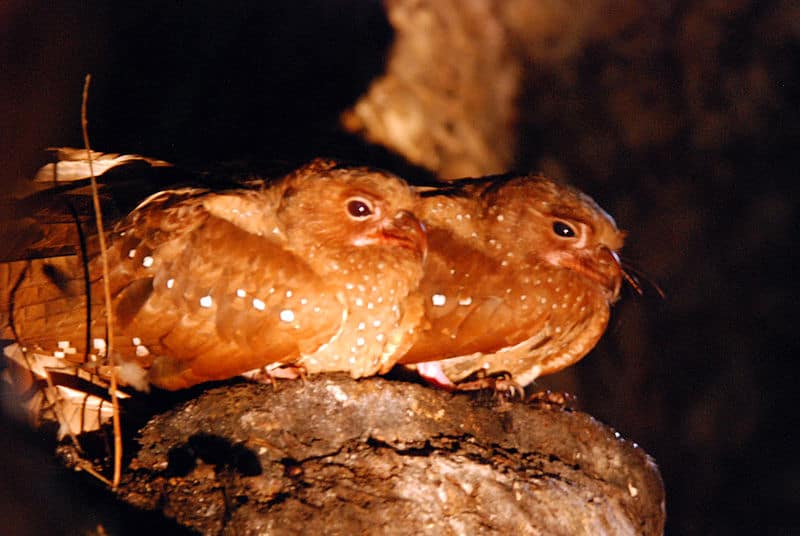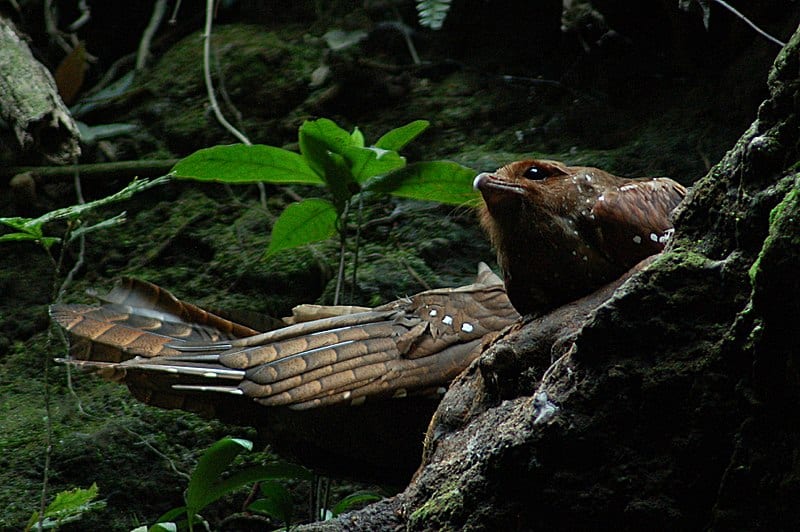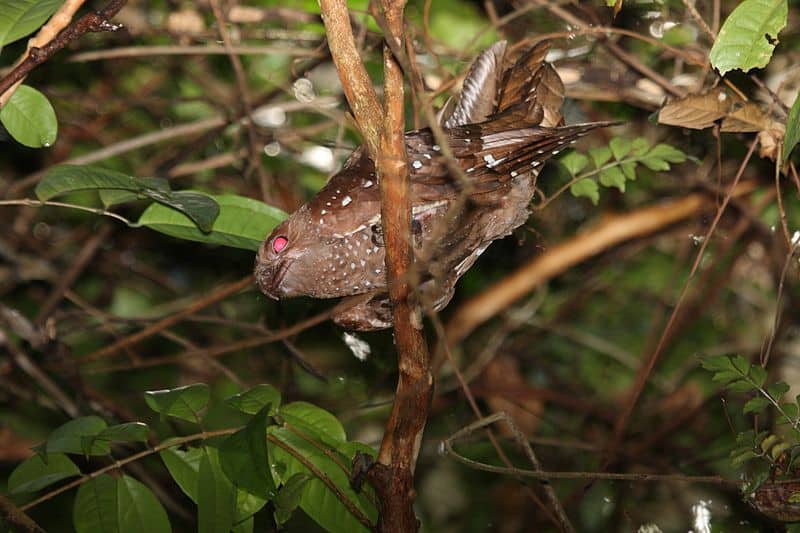
Oilbird Facts
- The short yet unique term of Oilbird represents the most frequently used common name for this remarkable variety of bird. The avian does have at least one other general title, though. That’s the appellation guácharo, typically used by locals in its region.
- Within the scientific community, however, it’s typically referred to by its technical title. That’s a moderately difficult name for the layperson to pronounce, though. That’s because the intriguing animal holds the technical moniker of Steatornis caripensis.
- It received that specific title due to the efforts of the German naturalist, Friedrich Wilhelm Heinrich Alexander von Humboldt. He acomplished the first official acknowledgement of it as a separate and distinct species. That occurred in 1817.
- This creature represents one of those extremely rare marvels of Nature. It literally stands apart from all other avians around the world. This remarkable product of evolution sits alone as the sole member of its Genus, Family, and even its Order!
- Fortunately, the fabulous Oilbird seems to be maintaining a population base that’s both stable and sufficient. That pleasant trend also appears to hold true across its entire range. Due to this, the IUCN presently lists it as Least Concern on its Red List.
- The animal nevertheless does face several potential threats to its continued existence, at least. Like other species, most of these stem from the actions of humans. They include the related perils of habitat loss and the ongoing effects of climate change.
Related Articles




Oilbird Physical Description
The incredible Oilbird fully merits appreciation by those lucky enough to encounter it. Yet it does so on both the personal level, for its appearance, and the scientific level, due to its uniqueness. In this animal, Nature created one of its most distinctive avian species.
One of the more minor ways in which it distinguishes itself pertains to its physical characteristics. That’s true since it displays no discernible degree of the physiological trait of sexual dimorphism. Identifying the genders can thus be difficult for the untrained observer.
Individuals of both sexes attain virtually identical physical measurements. The body of the species typically reaches a length equaling 16 – 19 in (40 -49 cm). It also demonstrates a reasonably respectable wingspan. This averages approximately 37 in (95 cm).
Weights of mature adults vary significantly, but not depending on gender. This most often ranges from 12.3 – 16.8 oz (350 – 475 gms). Interestingly, the young chicks often outmass their parents. Exceptional specimens in all these categories do occur, though.
In appearance, most examples of the Oilbird generally present a striking pattern of coloring. The comparatively soft feathers most commonly display a reddish-brown on the upper part. Meanwhile, many small white spots often appear on the wings and nape.
But there’s still more. The lower parts of the creature typically present a dark cinnamon color as a general background. Complementing this comes scattered unique white diamond shapes edged in black. These start small near the throat, but become larger further back.
- Kingdom: Animalia
- Phylum: Chordata
- Class: Aves
- Order: Caprimulgiformes
- Family: Steatornithidae
- Genus: Steatornis
- Species: S. caripensis

Oilbird Distribution, Habitat, and Ecology
The fascinating Oilbird evolved as endemic to a moderately large expanse of the globe. That precise region probably won’t surprise too many people, however. That’s because this wonder of evolution developed as native to portions of what’s now South America.
Within that greater overall zone of habitation, the natural wonder appears in a territory that covers the northern portions of that area. That includes such mainland countries as Venezuela, Colombia, Brazil, Ecuador, and Peru, in addition to the island of Trinidad.
The amazing bird displays decidedly strong preferences regarding its choice of habitat. Unfortunately, this does severely limit its options within its range. That has a tendency to generate highly concentrated population groupings, though often in scattered locations.
It typically only lives in regions meeting these very specific requirements. This includes the presence of large numbers of fruit-bearing trees and plants. It also needs the presence of abundant caves. Yet, it does appear at altitudes ranging from sea level to 11,200 ft (3,40 m).
The uniqueness of the Oilbird continues with aspects of its nature. It’s a nocturnal species, like owls. During the day, it rests on ledges in the caves it needs. At night, it mainly consumes the fruits of oil palms, thus the name, and the abundant tropical laurels present.
It thus ranks as the only nocturnal, flying, fruit-eating bird known to science! It has excellent eyes to aid in its nighttime foraging, of course. But it stands apart in yet another way. It also uses echolocation, like bats, to assist in navigation. Only a few birds have this ability.
Species Sharing Its Range



Check out our other articles on 6 Amazing South American Species, Bleeding Heart, Kemps Ridley Sea Turtle, Lord Howe Island Stick Insect, Indo-Pacific humpback dolphin









Leave a Reply